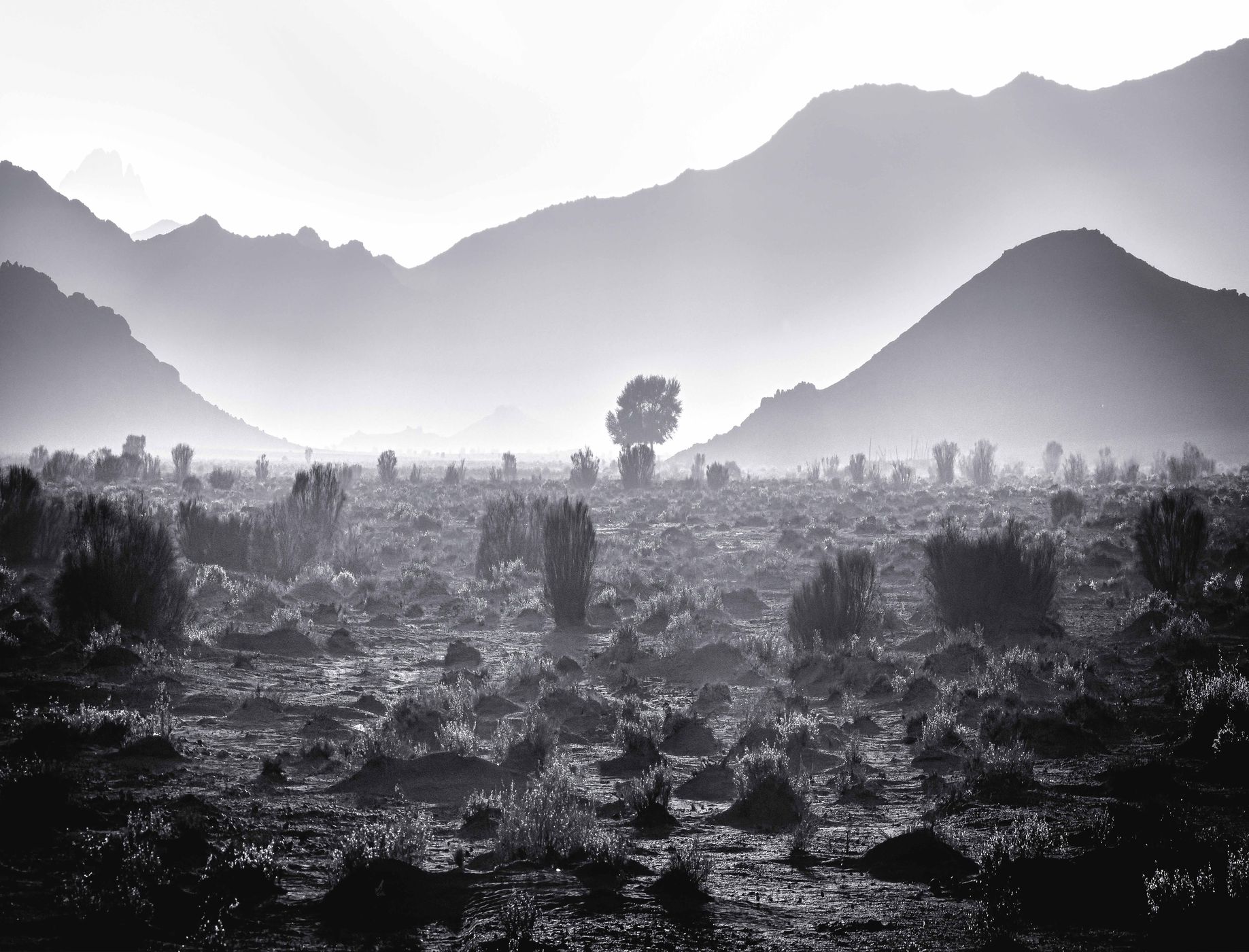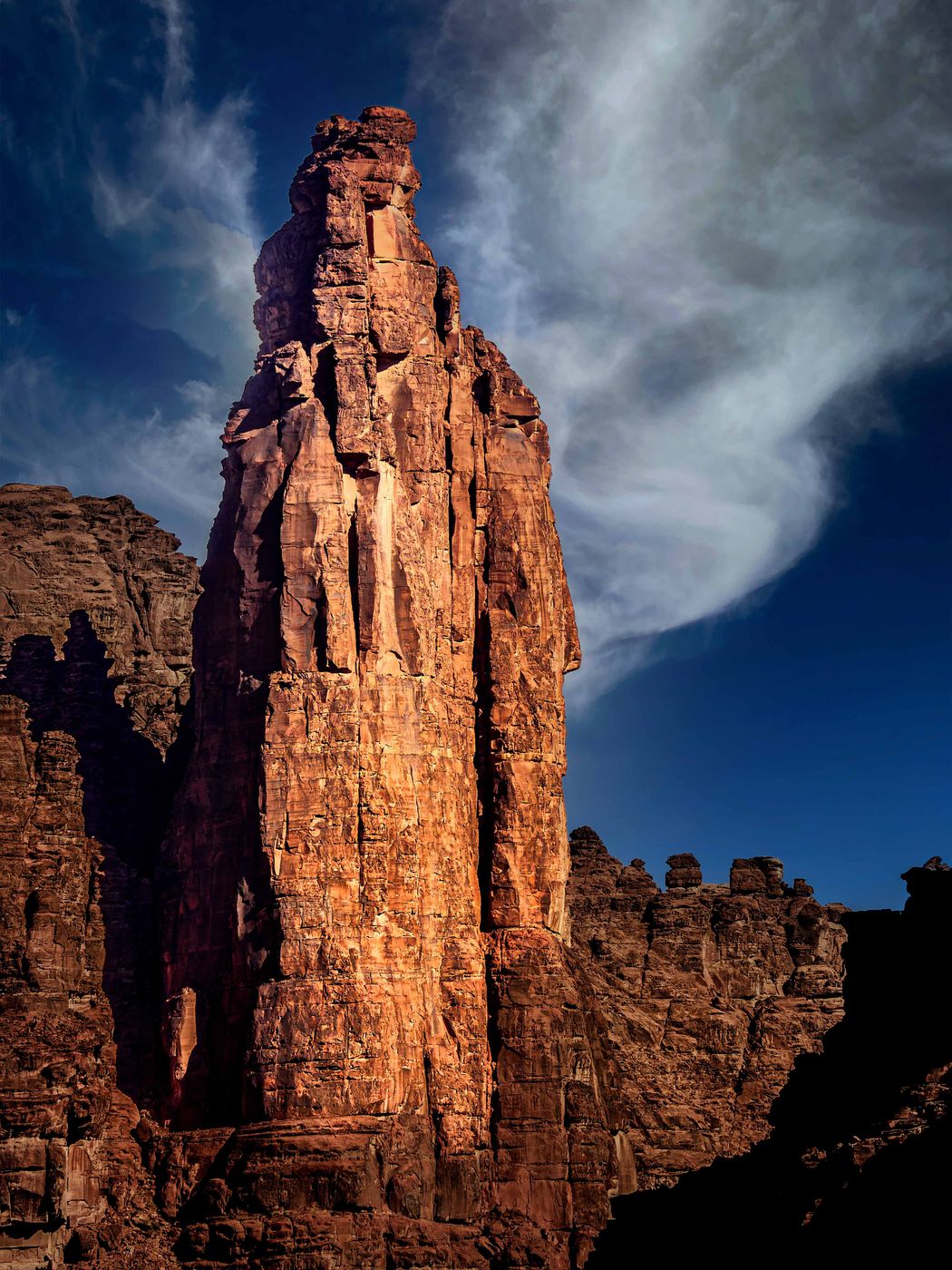Saudi Arabia Disah Valley
Disha Valley, likely referring to a picturesque location known for its natural beauty, would be important for a landscape photographer for several key reasons:
Unique Landscape Features: Disha Valley might offer distinctive geographical features such as mountains, rivers, valleys, or unique flora and fauna that are rare or unique to that region. Capturing these elements can add diversity and depth to a photographer's portfolio.
Dramatic Lighting: The valley's topography could create dramatic lighting conditions, with the potential for beautiful sunrises, sunsets, or the play of light and shadow throughout the day. This lighting can enhance the mood and atmosphere in landscape photography.
Serene Environment: Valleys often provide a sense of serenity and tranquility, allowing photographers to capture peaceful, undisturbed natural scenes. This can be particularly appealing for photographers looking to convey a sense of calm or isolation in their work.
Seasonal Variations: The valley might offer different looks and moods depending on the season, whether it's lush and green in spring and summer, or covered in snow during winter. This variety allows for multiple visits, each offering new opportunities for capturing the landscape in different conditions.
Cultural and Historical Context: If Disha Valley has cultural or historical significance, photographing it can provide context and storytelling elements to the images. This adds an extra layer of meaning and interest to the photos.
Biodiversity: The valley could be home to a diverse range of wildlife and plant species, offering opportunities for nature photography as well as landscape photography. The combination of landscapes and wildlife can create dynamic and compelling images.
Visiting Disha Valley would allow a landscape photographer to explore and capture a unique and potentially lesser-known location, adding richness and variety to their body of work.
Unique Landscape Features: Disha Valley might offer distinctive geographical features such as mountains, rivers, valleys, or unique flora and fauna that are rare or unique to that region. Capturing these elements can add diversity and depth to a photographer's portfolio.
Dramatic Lighting: The valley's topography could create dramatic lighting conditions, with the potential for beautiful sunrises, sunsets, or the play of light and shadow throughout the day. This lighting can enhance the mood and atmosphere in landscape photography.
Serene Environment: Valleys often provide a sense of serenity and tranquility, allowing photographers to capture peaceful, undisturbed natural scenes. This can be particularly appealing for photographers looking to convey a sense of calm or isolation in their work.
Seasonal Variations: The valley might offer different looks and moods depending on the season, whether it's lush and green in spring and summer, or covered in snow during winter. This variety allows for multiple visits, each offering new opportunities for capturing the landscape in different conditions.
Cultural and Historical Context: If Disha Valley has cultural or historical significance, photographing it can provide context and storytelling elements to the images. This adds an extra layer of meaning and interest to the photos.
Biodiversity: The valley could be home to a diverse range of wildlife and plant species, offering opportunities for nature photography as well as landscape photography. The combination of landscapes and wildlife can create dynamic and compelling images.
Visiting Disha Valley would allow a landscape photographer to explore and capture a unique and potentially lesser-known location, adding richness and variety to their body of work.
Photography Tips
Here’s an even shorter, more focused set of tips for Disah Valley:
Golden Hour: Shoot at sunrise or sunset for soft, warm light.
Leading Lines: Use rivers or ridges to guide the eye through the scene.
Wide-Angle: Capture the valley's vastness with a wide lens.
Dramatic Skies: Focus on clouds and colors; use ND filters to balance exposure.
Water Features: Shoot long exposures for silky water effects.
Embrace Weather: Use mist or rain for atmospheric, moody shots.
Golden Hour: Shoot at sunrise or sunset for soft, warm light.
Leading Lines: Use rivers or ridges to guide the eye through the scene.
Wide-Angle: Capture the valley's vastness with a wide lens.
Dramatic Skies: Focus on clouds and colors; use ND filters to balance exposure.
Water Features: Shoot long exposures for silky water effects.
Embrace Weather: Use mist or rain for atmospheric, moody shots.
Travel Information
o reach Disah Valley:
Fly to Tabuk, Saudi Arabia: This is the nearest major city with an airport.
Drive to Disah: Rent a car or hire a taxi from Tabuk and drive south for about 2-3 hours (approximately 200 km) to reach Disah Valley.
Off-Road Access: Depending on the exact location in the valley, you may need a 4x4 vehicle for off-road terrain.
Always check road conditions and prepare for remote travel.
Fly to Tabuk, Saudi Arabia: This is the nearest major city with an airport.
Drive to Disah: Rent a car or hire a taxi from Tabuk and drive south for about 2-3 hours (approximately 200 km) to reach Disah Valley.
Off-Road Access: Depending on the exact location in the valley, you may need a 4x4 vehicle for off-road terrain.
Always check road conditions and prepare for remote travel.
Spot Type
Outdoor
Crowd Factor
A decent amount of people
Best Timing
All timings are equally good
Sunrise & Sunset
06:06 - 19:00
| current local time: 22:49
Photo Themes
Landscape
Natural Landscape
natural park
nature landscape
nature reserve
Locations
tabuk











Spot Comments (5)